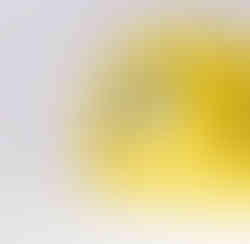Musa basjoo – Hardy Banana for Temperate Gardens
Musa basjoo Siebold ex Miq., known as the Japanese Fiber Banana, is the most cold-hardy banana species cultivated today. Native to the Ryukyu Islands of southern Japan, it brings dramatic tropical flair even to temperate gardens. With its large paddle-shaped leaves and resilient underground rhizomes, Musa basjoo can regrow each spring even after harsh winters when properly mulched. While it rarely produces edible fruit outside of tropical climates, it remains highly valued for its bold, lush foliage and fast seasonal growth.
Why Choose Musa basjoo?
- True Tropical Look: Enormous leaves (up to 2 meters long) instantly create an exotic atmosphere.
- Exceptional Cold Hardiness: Rhizomes survive down to -10 °C to -15 °C with adequate protection.
- Rapid Seasonal Growth: Can reach 2–4 meters in a single growing season under optimal conditions.
- Non-Toxic: Safe for pets and humans — no toxicity concerns.
Botanical Profile and Natural Habitat
- Native Range: Originally from the Ryukyu Archipelago of Japan, a humid subtropical region.
- Typical Growth Form: Clump-forming herbaceous perennial with a fibrous pseudostem made from overlapping leaf bases.
- Root System: Rhizomatous; spreads underground to form dense mats over time.
- Flowering: Produces yellowish flowers on mature plants; fruits are small, green, and generally inedible.
How to Care for Musa basjoo
- Placement: Full sun is ideal; partial shade tolerated but growth slows.
- Light Needs: At least 6 hours of direct sunlight daily for best vigor.
- Watering: Keep soil consistently moist but never waterlogged. Increase watering in hot summer months.
- Humidity Preference: Thrives with moderate to high humidity levels; tolerates brief dry periods if soil moisture is maintained.
- Temperature Range: Optimal between 20–30 °C; protect rhizomes if winter lows drop below -10 °C.
- Soil Requirements: Rich, organic, fast-draining soil is crucial. Improve heavy soils with compost, perlite, and sand.
- Fertilization: Feed monthly with a high-nitrogen fertilizer during active growth (spring–early autumn).
- Repotting / Outdoor Planting: For pots, size up annually; for gardens, provide deep, loose soil and space for clump expansion.
- Pruning: Cut back frost-damaged pseudostems in late winter or early spring.
- Winter Protection: In colder zones, mulch heavily with straw, leaves, or fleece over the crown and base.
- Propagation: Easily propagated by separating rhizome offsets (“pups”) in spring or early summer.
Common Problems and How to Fix Them
- Leaf Browning: Caused by strong wind or low humidity; provide shelter and mist foliage during dry spells.
- Cold Damage: Frost will kill above-ground parts, but mulched roots regrow. Cut dead material back in spring.
- Pest Attacks: Occasional infestations of spider mites, aphids, or banana weevils — treat with insecticidal soap or neem oil.
- Yellowing Leaves: Can signal nutrient deficiency or water stress — adjust watering and feed with a balanced fertilizer.
Additional Growing Tips for Musa basjoo
- Wind Protection: Shelter young plants from strong winds to prevent leaf shredding.
- Container Growing: Use large, heavy pots with excellent drainage. Overwinter indoors or heavily insulate containers outdoors.
- Companion Planting: Excellent when combined with cannas, elephant ears, and hardy gingers for a bold tropical effect.
Etymology and Botanical History
- Genus "Musa": Named from Arabic "mauz," borrowed from Sanskrit "moca," referring to bananas.
- Species "basjoo": Refers to the traditional use of this banana in Japan for fiber production, particularly for making textiles and ropes.
- Botanical Discovery: First scientifically described by Philipp Franz von Siebold and Friedrich Anton Wilhelm Miquel in the mid-19th century.
Frequently Asked Questions about Musa basjoo
- Can Musa basjoo really survive snow and frost?
Yes, if rhizomes are protected with heavy mulch in winter, they reliably sprout back in spring. - Does it produce edible bananas?
Rarely outside tropical climates. The small fruits are typically full of seeds and not considered edible. - Can Musa basjoo be grown in a pot?
Yes. Use a large, deep container with rich, fast-draining soil and overwinter protection in colder climates.
Order Musa basjoo and Create a Tropical Paradise at Home!
Transform your garden into a lush oasis with Musa basjoo — the banana that braves the cold. Strong, fast-growing, and easy to maintain, it brings bold texture and dramatic impact to any landscape. Order today and start your tropical journey!
Musa basjoo
Musa basjoo comes is approximately 45 cm tall and comes in a ⌀ 17 cm pot.

























































